|
Highlights of Yangtze
River
April 1, 2000. Our cruise initiated in Chongquing where we boarded our
boat after dinner. We fought our way
through the porters who crowded us and grabbed at our luggage just so that they
could make some money off of us. The dock was quite rickety anyway so it
made for an interesting boarding.
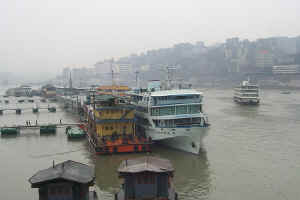 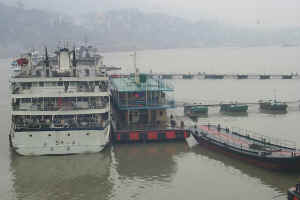
This was the first cruise of the season so many of the crew were new. Some
were practicing their English on us - their text books left a lot to be
interpreted. The boat was only half full (75 people instead of 150) which
made it more comfortable for all of us. There were all nationalities on
board. We hooked up with several couples from the US: San Antonio and Los
Angeles; and shared meals with them throughout the cruise.
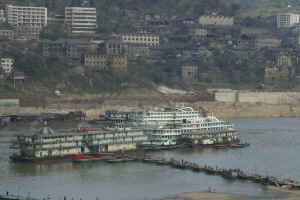 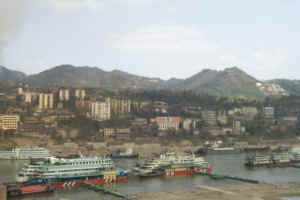
April 2. We spent the first night on the boat dockside at Chongquing.
Early in the morning we take off down river. It is a cloudy day so our last
images of the city are gray and smoggy.
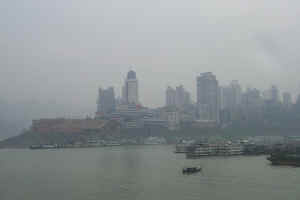
The Yangtze is China's longest river and the third longest in the world.
It originates in southwest Qinghai, moves through Tibet and seven Chinese
provinces before emptying into the East China Sea north of Shanghai. Our
four day cruise embarks from Chongquing and moves downstream to Wuhan.
Rational for the increased interest in cruising down the river is the fact
that in 2003 the new Sanxia Dam (Three Gorges Dam) will be completed and the
backup of the river water (135 m) will start to cause many of the existing towns
and the major gorges to be flooded.
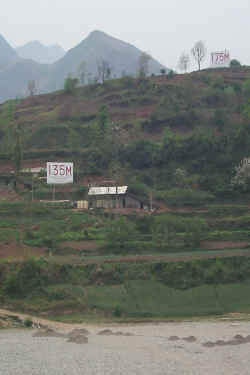
China has already undertaken
major construction of new cities in anticipation of moving inhabitants of the
lower banks to higher ground (+175m). Over 1300 cities that currently contain
more than 1.3 million people will be underwater in less then ten
years.
China publicly uses this project as a means to showcase its intent on moving
its country to alternative power sources besides coal. In reality the
amount of power to be provided by this dam will never be cost effective or
satisfy the demand of its large population.
During our first day we stop at the major city of Fengdu. Historically this
town is associated with the devil and demons and it is where numerous temples
containing sculptures of devils exist on the mountain.
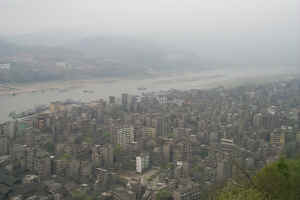 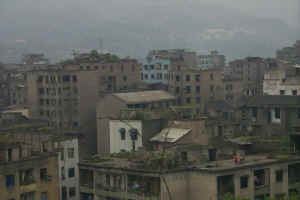
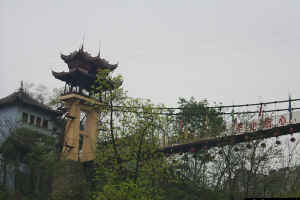
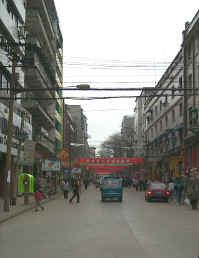
There is a Ghost
City situated above Fengdu and accessible by means of a chair lift. The Ghost
City is so garish that it suggests an amusement park rather than a monument to
the departed.
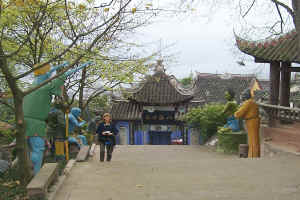 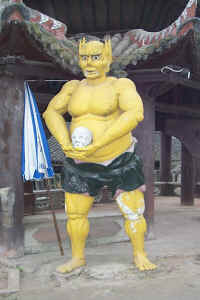
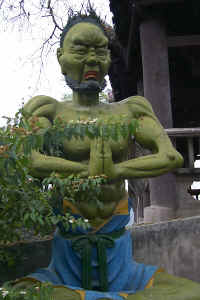 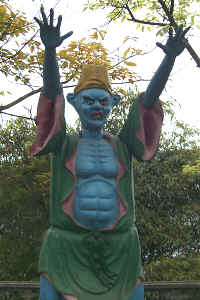
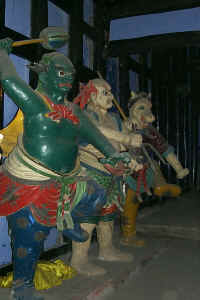 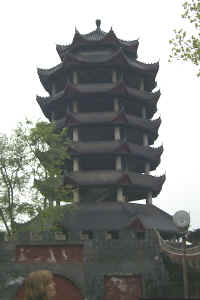
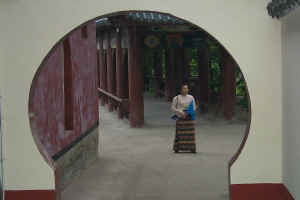
Looking down from the Ghost City, the countryside is very lush and serene.
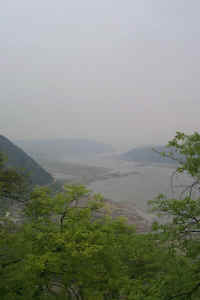 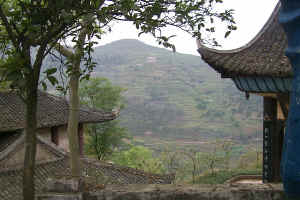
The Buddhist temple with its larger than life sculptures creates
an uncomfortable aura to the site. Across the mountain is another temple "White
Face of a Monk" which is built seemingly to be tumbling down the
countryside.
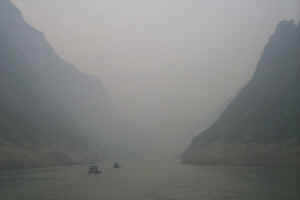 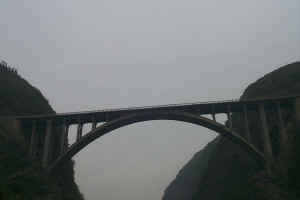
April 3. We pass through the first and shortest (Qutang) of the famous
Three Gorges for which the trip is known. Sheer walls and sharp rocks denote the
danger that this region once brought to those moving through the canyons in
earlier times. Our view was limited due to the early morning fog or smog
so we did not get a good of view of the cliffs.
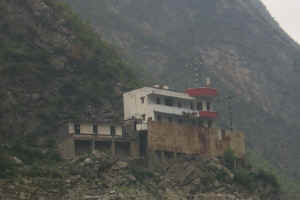
We stop a few miles down at Wushan for a tour of the Little Three
Gorges. Here we disembark from the cruise boat, take a bus through town
and then board smaller touring boats for an afternoon excursion up the Daning
River. This trip into the smaller and more intimate river valley provided
a view of China that we had not experienced previously.
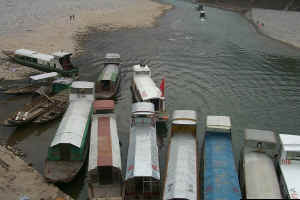 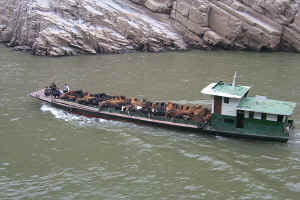
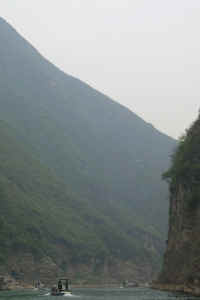 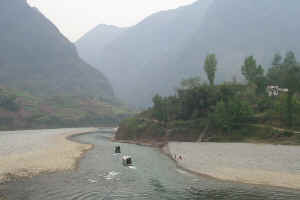
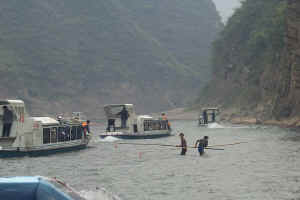 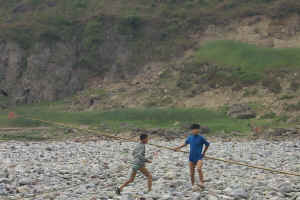
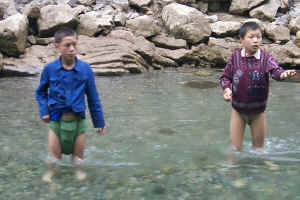 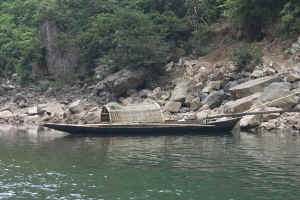
The countryside
was lush with neatly tended farms, animals and people working diligently tending
their crops or flocks. We passed markets where people gather to sell or trade
their wares or to pass them on to traders who would take them downstream on the
Yangtze. The water was clear and the air was clean- a first since we had
arrived in China.
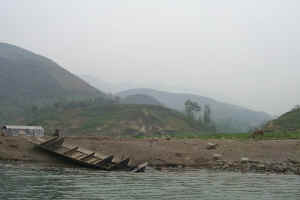 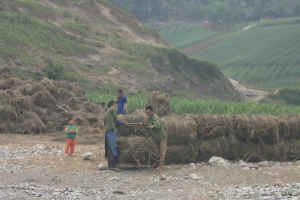
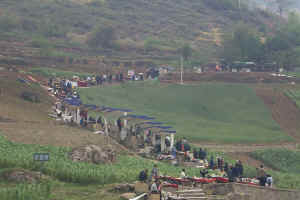 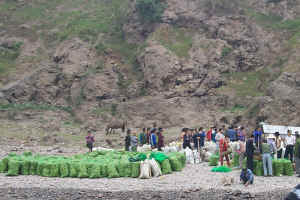
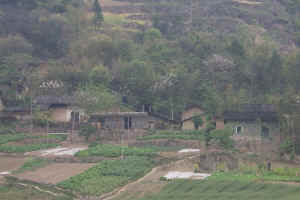 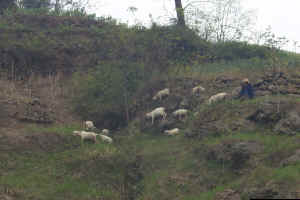
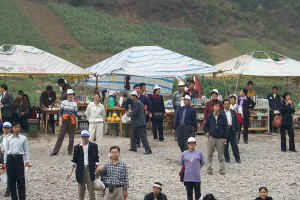 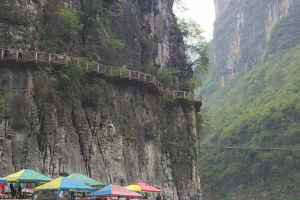
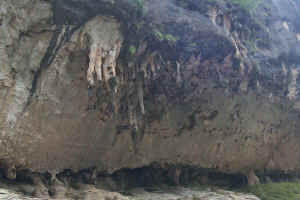
Stopping at one of the small river towns, we came upon a group of school
children during their recess. They were very curious about the digital camera.
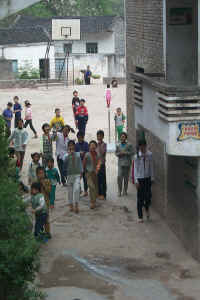 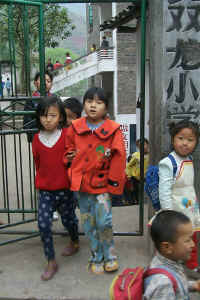
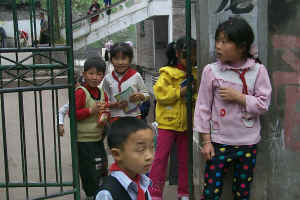 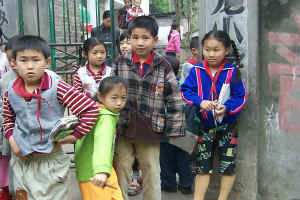
Upon returning to our boat, Jon and I crater in our first (and only) bout of
sickness. The boat parked in the town of Ziqui and we had a sleepless
night.
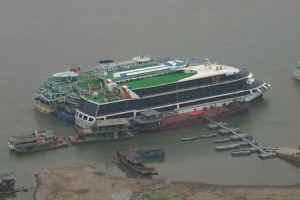
April 4. We are weak but we struggle up on deck to watch us pass
through the second gorge (Wu). The third and longest gorge is the
Xiling Gorge which follows quickly after Wu. Located at Sandouping
is the site of Sanxia Dam which is our destination by bus to take us directly to
the visitor's center.
The dam site is a massive infrastructure. There are lean-to shelters
constructed in the shadows of the concrete pours where workers are
living. This is a linear dam (not a compression arch) which spans
the entire river.
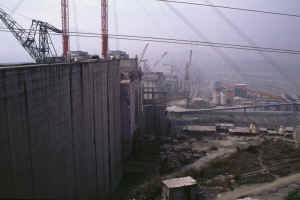
Further down the river we enter the Gezhou Dam. We head into Lock #3 and
within 30 minutes we have been lowered 30 feet. Upon completion of the Sanxia
Dam there will be 3-5 such locks along the river. We continue our journey
down river throughout the night.
April 5. We are scheduled to dock at Wuhan at noon and disembark. Upon
arrival we dash for the airport and fly to Tunxi. This evening we stay at
the Tunxi International Hotel. During dinner we spoke with several
travelers who had just returned from Huangshan (the Yellow
Mountains -our
destination for the next day). Although the president of the Congo was
staying at the hotel, we did not catch a glimpse of him.
|